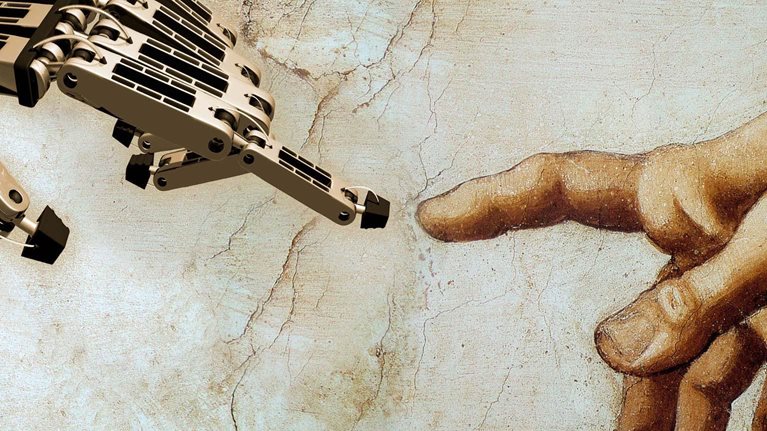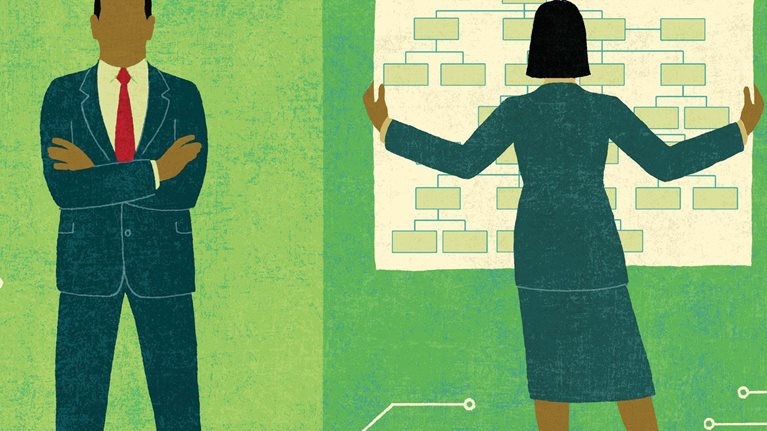It’s no secret that one of the biggest challenges companies face when it comes to adopting and embedding digital processes is finding the right talent. In our latest Discussions on Digital podcast, McKinsey’s Brian Gregg, a principal in McKinsey’s San Francisco office who heads its consumer digital-excellence initiative, explores the war for talent with several Silicon Valley leaders. Brian was joined by Tim Anderson, senior vice president of product management at Glassdoor; Dianne Esber, an associate principal in McKinsey’s San Francisco office; Kiran Prasad, vice president of engineering at LinkedIn; and Anne Robie, the global head of human resources at StubHub. An edited transcript of the conversation follows.
The shift to data-driven talent management
Brian Gregg, principal, McKinsey: It seems like we’ve just hit the precipice of a gigantic shift, where data analytics and how we think about evaluating and managing talent are about to change, or maybe are changing right in front of us. What big shifts do you foresee as data and technology start to change the landscape of talent management?
Anne Robie, head of human resources, StubHub: From an HR perspective, we’ve sort of been in the dark ages. We started as the personnel department, and now people are coming up with titles like “chief people officer.” Data helped the rest of the business leapfrog from a strategic standpoint. The next frontier is in regard to human resources. I look at data in terms of performance management and how we’re thinking about our talent and who we think can be successful, and big data can help me predict who will be a successful employee. But there is still so much that is incredibly important with regards to gut feel and cultural fit.
Kiran Prasad, vice president of engineering, LinkedIn: It’s definitely a balance of art and science, and probably more art than science. Every time we’ve looked at all the data and we’ve tried to predict whether a person’s going be successful or not, what we’ve generally found is that there is a sense of passion that is hard to measure.
Anne: We’ve been looking at some really interesting uses of predictive analytics. For example, when does attrition happen and why? And can we then predict what’s going to happen 6, 12, 18, 24 months out, given historical trends? That really helps us if we can hire ahead or if we know that we need a certain skill set in the future. I can wrap my arms around those employees and help them to really want to stay.
Tim Anderson, senior vice president of product management, Glassdoor: We just implemented a sales tool that is supposed to do just that for accounts. It scores a bunch of signals—for example if a client hasn’t logged into their employer center in two months or just changed their job title on LinkedIn. You can score all those signals, so I can see how that would be applied to attrition.
Dianne Esber, associate principal, McKinsey: Think about a place like Google, which has their “Googley” score, which is this qualitative art that they care about. They’re still factoring in a number of different dimensions and have really changed their process over time. For example, they used to be very prestige based and cared about SAT scores and where you went to school. As they’ve done predictive analytics with those metrics, they’ve found that’s not what correlates with success. So they’ve changed some of those practices in response. It’s not that it necessarily predicts success or failure, but they’ve found things that don’t correlate, and they don’t spend time using those as screening criteria.
What millennials care about
Brian: In one or two generations, we’ve gone from people getting a job once every 20 years to much more often. How different is the job market for millennials?
Kiran: In some areas, people still stay in jobs for 20 years. I think we’re very delusional in Silicon Valley, where everybody changes jobs every four years, maybe even faster. Our compensation systems are set up to optimize a four-year turnaround cycle. Most people in middle America don’t change that often, and most people are risk averse. In Silicon Valley, you’ve concentrated a whole bunch of people who are risk friendly into a specific area and are then using them as an extrapolation of how the rest of the world works. It doesn’t.
Anne: At StubHub, my millennial population is way more interested in how we’re connected to community. They’re concerned about what we’re doing and how we’re connecting. Are we connected locally? What are we doing globally?
Tim: We just opened a team in Kenya moderating content and doing special projects on our data. We sent pictures to the entire company, and the feedback was amazing. People were so glad to see us adding value in another part of the world. If you have the culture, you can do that in any city. I’d actually stay away from Silicon Valley, because it’s too competitive here. We’ve had an impossible time hiring great talent in any function, whether it be engineering, user experience, or data science. We’ve had more luck relocating people and have been talking about what other satellite offices we should open.
Kiran: I disagree. I think a lot of things about how we work, like the culture and knowing that the perks aren’t the thing, are unique to the Valley today. And until mainstream America and the large companies actually come and create a hub and understand the difference, they can’t replicate it.
The ‘gig economy’ and a future without employees?
Brian: Has the new transparency fundamentally changed how recruiters react or the way they recruit?
Anne: Hiring for the future means being laser focused on what’s really important to you. About a year and a half ago, StubHub was growing like crazy, and I think we hired any engineer we could find. We’re paying for it now—in our Glassdoor reviews, in attrition, and in our engagement surveys. So now I force my managers into having a much harder lens on who we bring in, in line with who we are and who we’re trying to be. The future of talent is that people are not actually wanting to be employees. They want to have a wide variety of experiences. They’d like to be a contract hire and live in San Francisco for six months, then Singapore, and maybe London after that. It’s this more transient population that may go deep in their particular skill. They never get bored, and they’re kind of like hired hands.
Kiran: The really effective marketplace on a project basis is definitely the future. Within ten years I think you’ll start to see more people with specific skill sets being able to just come forward and say, “I know how to do this. Somebody needs to hire me. I have recommendations from these other three people I’ve done jobs for.”
The ROI of recruiting and the next ‘must have’ talent
Brian: Hal Varian, Google’s chief economist, famously said that for the ’90s and the last decade, it was more or less the computer scientists who were the gems of the talent market. Do you agree?
Anne: I definitely think HR people are in demand. But how do you move from the HR professional who is really good at the traditional kind of recruiting, developing, retaining talent and move them more into more of a data-science role? HR used to be a nice thing on the side, to make sure we hire and develop the right people. We have to change the definition of what HR is. There is always going to be an art to it. But the science piece is woefully lacking in a lot of HR organizations. They need to be able to drive more analytical research and understand ROI and the cost of things from a people perspective.
Tim: Recruitment is a $19 billion global industry. Ask companies how much they’re spending on recruiting, and then ask what their cost per hire is. At Glassdoor, we have a performance-based advertising product, job advertising, which LinkedIn also has. Give us a budget and we’ll send you applicants. You’ll see cost per applicant and will be able to track that to cost per hire.
Kiran: The biggest trouble we have is that you can collect all the data and analyze it, but if you can’t present it in a short, concise, consumable way for our leaders to be able to then take action, it’s effectively irrelevant. The hardest thing I found with data scientists is they can’t actually visualize the data. They dump a gigantic spreadsheet on you, and it’s difficult to figure it out. The designers, the people who can take these really complicated data or engineering or marketing or sales problems and translate it all down into a simple message are the “unicorns.” I don’t actually believe data scientists will be hired in volume. They’ll be hired by software companies to build software that eliminates the need for data scientists in all of these. That’s the definition of software. It automates away the need for people in those specific repetitions.
Tim: A good designer makes the world of difference. It’s about taking something complex and trying to make it simple, so that everyone can understand it and use it. I’m not a designer, but I have a very strong design bias, because I feel like a great user experience will always win. I feel like designers get shortchanged a little bit, especially when considered against engineers or statisticians.
The next Silicon Valley
Brian: If you were to project out ten years, where do we expect the next Silicon Valley to pop up?
Tim: I think it’s going to be a lot more distributed. I just don’t think it’s going to be in one place.

Would you like to learn more about our Digital Practice?
Anne: I’m going to say what it’s not. It’s not the US. I don’t know where it is. I think it’s in a developing country. And I think it’s a country that is smart and invests in its people and allows for creativity.
Dianne: I’m always impressed with these pockets of talent. It ties back to the question of whether we are actually going to have an economy that pieces together parts of different people’s time. For example, I’ve worked with computer scientists in Poland, people in São Paulo, people all over the world in very niche things. So I don’t know that there’s going to be one place altogether.
Kiran: I have two very different answers. First: China, Shanghai. I visited there a little while ago. The pace of innovation is extraordinary. They take something like innovation and call it micro-innovation. They’ll put 80 people on a challenge and will try all 80 A/B tests that you want to try simultaneously and in all directions. The second answer is a person’s living room. Knowledge workers are becoming more and more distributed. But outside of management roles, as an individual contributor—whether I’m a designer or an engineer or a product manager—I can actually be really successful not being at the office.


